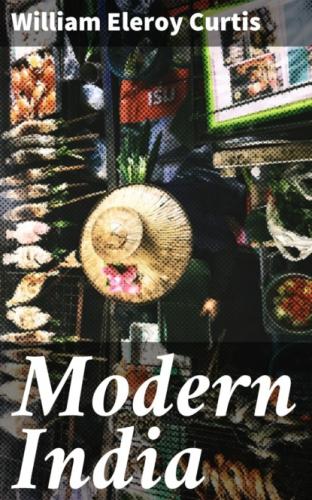The following table shows the number of people supported by each of the principal occupations named:
| Agriculture | 191,691,731 |
| Earth work and general labor (not agriculture) | 17,953,261 |
| Producing food, drink and stimulants | 16,758,726 |
| Producing textile fabrics | 11,214,158 |
| Personal, household and sanitary | 10,717,500 |
| Rent payers (tenants) | 106,873,575 |
| Rent receivers (landlords) | 45,810,673 |
| Field laborers | 29,325,985 |
| General laborers | 16,941,026 |
| Cotton weavers | 5,460,515 |
| Farm servants | 4,196,697 |
| Beggars (non-religious) | 4,222,241 |
| Priests and others engaged in religion | 2,728,812 |
| Workers and dealers in wood, bamboo, etc. | 2,499,531 |
| Barbers and shampooers | 2,331,598 |
| Grain and pulse dealers | 2,264,481 |
| Herdsmen (cattle, sheep and goats) | 2,215,791 |
| Indoor servants | 2,078,018 |
| Washermen | 2,011,624 |
| Workers and dealers in earthen and stone ware | 2,125,225 |
| Shoe, boot and sandal makers | 1,957,291 |
| Shopkeepers | 1,839,958 |
| Workers and dealers in gold and silver | 1,768,597 |
| Cart and pack animal owners | 1,605,529 |
| Iron and steel workers | 1,475,883 |
| Watchmen and other village servants | 1,605,118 |
| Grocery dealers | 1,587,225 |
| Sweepers and scavengers | 1,518,482 |
| Fishermen and fish curers | 1,280,358 |
| Fish dealers | 1,269,435 |
| Workers in cane and matting | 1,290,961 |
| Bankers, money lenders, etc. | 1,200,998 |
| Tailors, milliners and dressmakers | 1,142,153 |
| Officers of the civil service | 1,043,872 |
| Water carriers | 1,089,574 |
| Oil pressers | 1,055,933 |
| Dairy men, milk and butter dealers | 1,013,000 |
The enormous number of 1,563,000, which is equal to the population of half our states, are engaged in what the census terms "disreputable" occupations. There are about eighty other classes, but none of them embraces more than a million members.
Among the curiosities of the census we find that 603,741 people are engaged in making and selling sweetmeats, and 550,241 in selling cardamon seeds and betel leaves, and 548,829 in manufacturing and selling bangles, necklaces, beads and sacred threads. There are 497,509 teachers and professors, 562,055 actors, singers and dancers, 520,044 doctors and 279,646 lawyers.
The chewing of betel leaves is one of the peculiar customs of the country, even more common than tobacco chewing ever was with us. At almost every street corner, in the porticos of the temples, at the railway stations and in the parks, you will see women and men, squatting on the ground behind little trays covered with green leaves, powdered nuts and a white paste, made of the ashes of cocoanut fiber, the skins of potatoes and a little lime. They take a leaf, smear it with the lime paste, which is intended to increase the saliva, and then wrap it around the powder of the betel nut. Natives stop at these stands, drop a copper, pick up one of these folded leaves, put it in their mouths, and go off chewing, and spitting out saliva as red as blood. Strangers are frequently attracted by dark red stains upon pavements and floors which look as if somebody had suffered from a hemorrhage or had opened an artery, but they are only traces of the chewers of the betel nut. The habit is no more harmful than chewing tobacco. The influence of the juice is slightly stimulating to the nerves, but not injurious, although it is filthy and unclean.
It is a popular impression that the poor of India live almost exclusively upon rice, which is very cheap and nourishing, hence it is possible for a family to subsist upon a few cents a day. This is one of the many delusions that are destroyed when you visit the country. Rice in India is a luxury that can be afforded only by the people of good incomes, and throughout four-fifths of the country is sold at prices beyond the reach of common working people. Sixty per cent. of the population live upon wheat, barley, fruit, various kinds of pulses and maize. Rice can be grown only in hot and damp climates, where there are ample means of irrigation, and only where the conditions of soil, climate and water supply allow its abundant production does it enter into the diet of the working classes. Three-fourths of the people are vegetarians, and live upon what they produce themselves.
The density of the population is very great, notwithstanding the enormous area of the empire, being an average of 167 to the square mile, including mountains, deserts and jungles, as against 21.4 to the square mile in the United States. Bengal, the province of which Calcutta is the capital, on the eastern coast of India, is the most densely populated, having 588 people to the square mile. Behar in the south has 548, Oudh in the north 531; Agra, also in the north, 419, and Bombay 202. Some parts of India have a larger population to the acre than any other part of the world. The peasants, or coolies, as they are called, are born and live and die like animals. Indeed animals seldom are so closely herded together, or live such wretched lives. In 1900, 54,000,000 people were more or less affected by the famine, and 5,607,000 were fed by the government for several months, simply because there was no other way for them to obtain food. There was no labor they could perform for wages, and those who were fortunate enough to secure employment could not earn enough to buy bread to satisfy the hunger of their families. It
